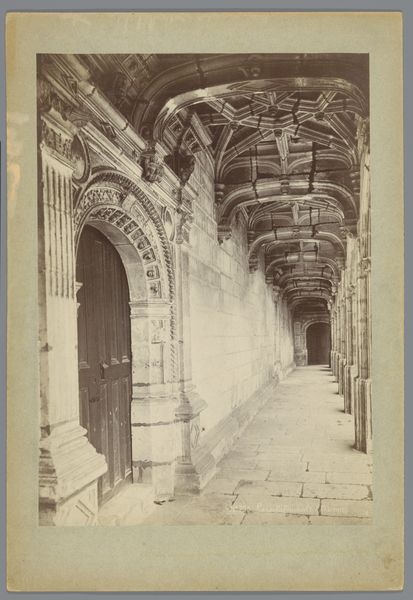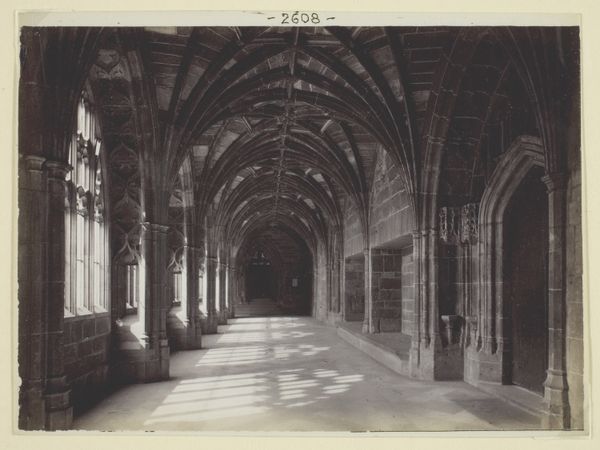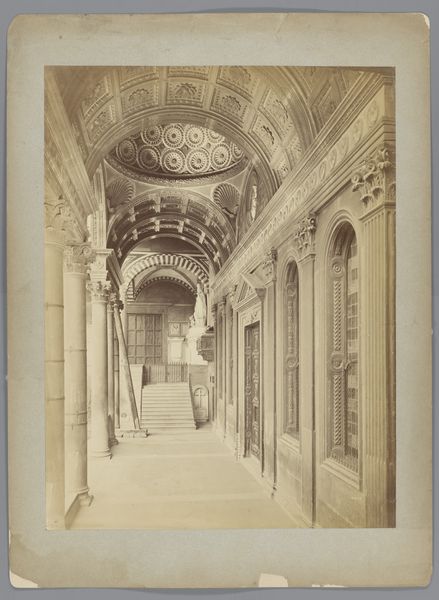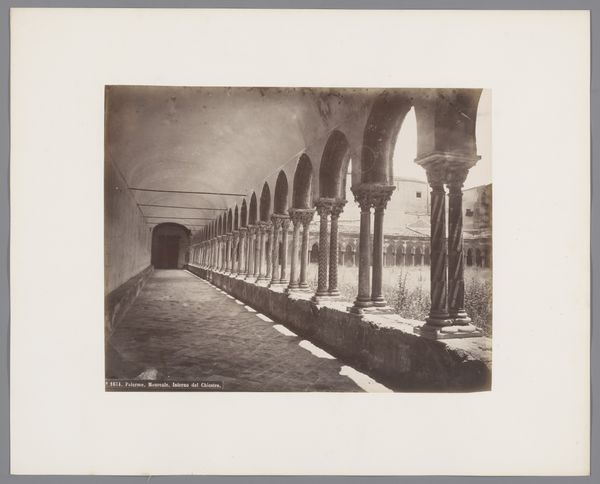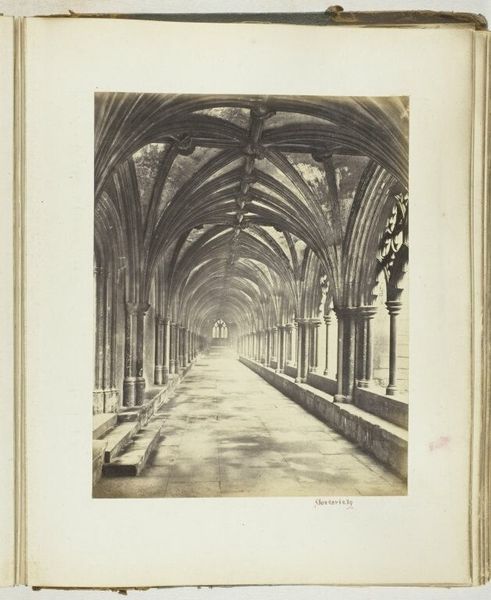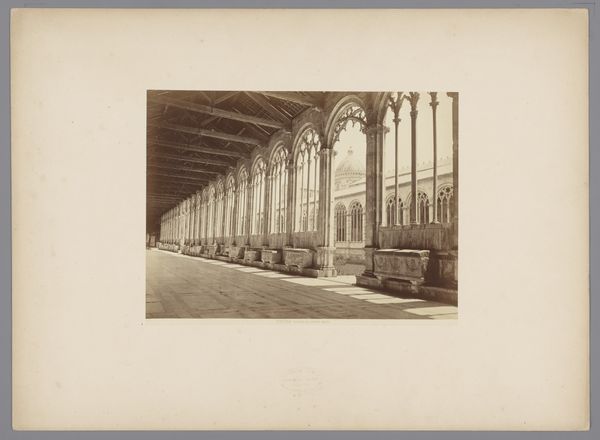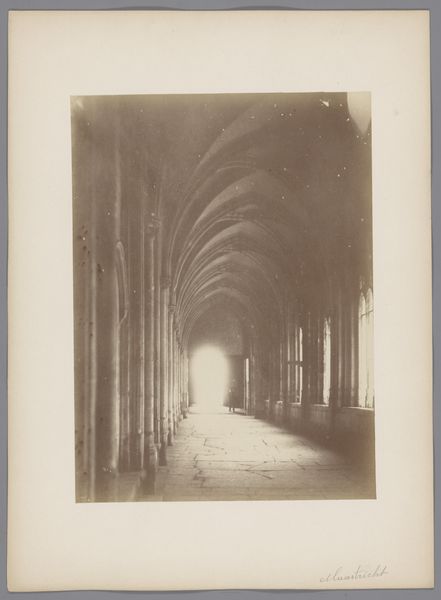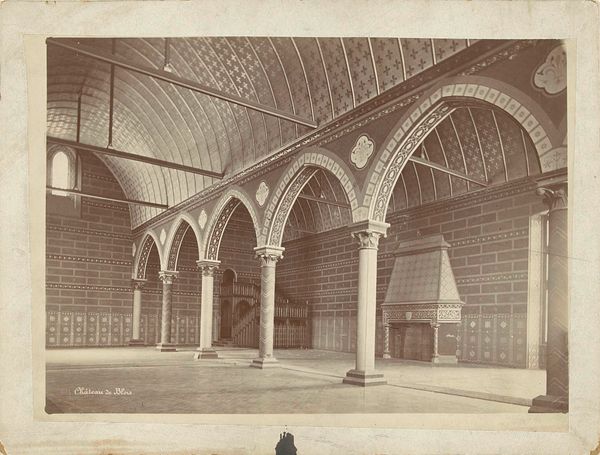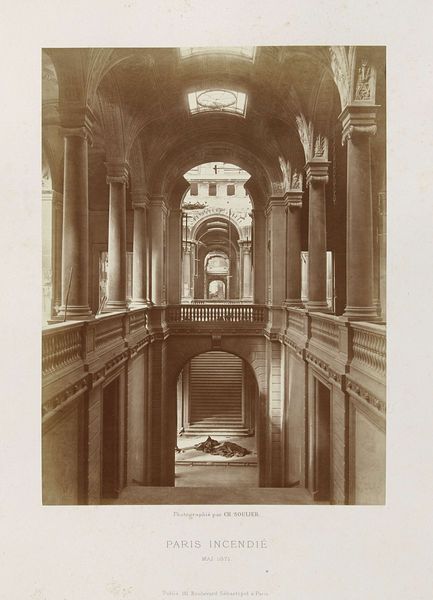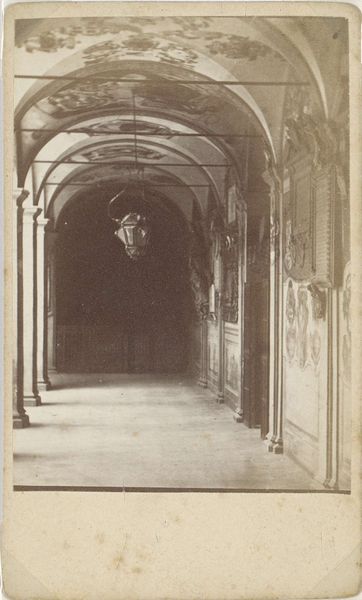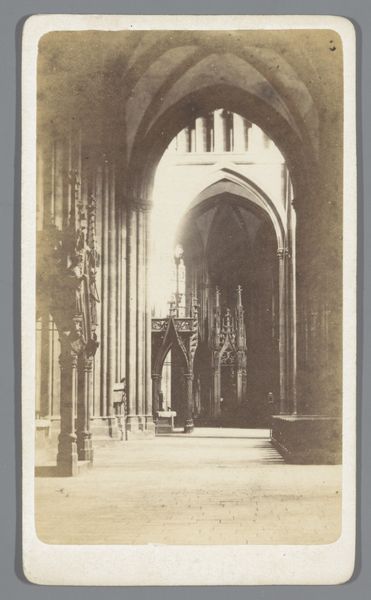
print, public-art, photography, architecture
# print
#
outdoor photograph
#
public-art
#
archive photography
#
photography
#
historical photography
#
line
#
cityscape
#
public art photography
#
architecture
Dimensions: height 252 mm, width 195 mm
Copyright: Rijks Museum: Open Domain
Curator: This photograph, titled "Gezicht in de galerij van de Banca Nazionale in Bologna," was captured by R. Peli sometime between 1870 and 1890. It showcases a long, covered walkway. What strikes you most about it? Editor: The receding arches really create a sense of endless perspective. It's almost dizzying, like peering into the past itself, the sepia tones reinforcing that feeling of history weighing down on you. Curator: Indeed, Peli has expertly used linear perspective. Notice how the repetition of the arches and columns creates a rhythm that guides the eye deep into the composition, converging at a vanishing point in the distance. The geometry itself becomes a primary subject. Editor: I see that. But I can’t ignore how these arches weren’t built in a vacuum. The Banca Nazionale represents capital, power, the very structure of a burgeoning modern Italy. Doesn’t this photograph subtly ask us about who has access to this architectural grandeur? Who is allowed to walk through this colonnade? Curator: Certainly, architecture and power are intertwined, and your reading invites important considerations. But within the photograph itself, Peli’s attention to detail – the play of light and shadow on the columns, the intricate patterns on the ceiling – reveals an exploration of form and texture that speaks beyond its immediate socio-political context. Editor: But the photographic medium itself—this is not an unmediated view! Peli is consciously composing and curating our experience, framing not just a beautiful architectural element, but also a specific vision of Italian society and its relationship with its economic institutions. Curator: I appreciate your perspective on how this image can inform broader discourses on history, identity, and power. At its core, Peli's photograph remains a compelling study of architectural space and photographic form. Editor: Perhaps both, the space and the historical structures that produced it, demand our sustained inquiry.
Comments
No comments
Be the first to comment and join the conversation on the ultimate creative platform.
